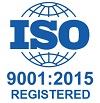EFFECT FROM THE ACADEMIC YEAR 2013 - 2014
EC 451
RADAR AND SATELLITE COMMUNICATION
Instruction 4 Periods per week
Duration of University Examination 3 Hours
University Examination 75 Marks
Sessional 25 Marks
UNIT-I
Introduction to radar, radar block diagram and operation, radar frequencies, Applications of radar, Prediction of range performance, minimum detectable signal, receiver noise, probability density function, SNR, Integration of radar pulses, radar cross-section of targets, PRF and range ambiguities, transmitter power, system losses.
UNIT-II
Doppler effect, CW radar, FM CW radar, multiple frequency CW radar. MTI radar, delay line canceller, range gated MTI radar, blind speeds, staggered PRF, limitations to the performance of MTI radar, non-coherent MTI radar.
UNIT-III
Tracking radar: sequential lobing, conical scan, monopulse: amplitude comparison and phase comparison methods, Radar antennas. Radar displays. Duplexer.
Orbital aspects of Satellite Communication: Introduction to geo-synchronous and geo-stationary satellites, Kepler’s laws, Locating the satellite with respect to the earth, sub-satellite point, look angles, mechanics of launching a synchronous satellite, Orbital effects, Indian scenario in communication satellites.
UNIT-IV
Satellite sub-systems: Attitude and Orbit control systems, Telemetry, Tracking and command control system, Power supply system, Space craft antennas, multiple access techniques, comparison of FDMA, TDMA, CDMA.
7 28
UNIT-V
Introduction to satellite link design, basic transmission theory, system noise temperature and G/T ratio, design of down link and uplink, design of satellite links for specified C/N, satellite data communication protocols.
Suggested Reading :
1. Merril. I. Skolnik, “Introduction to Radar Systems”, 2/e, MGH, 1981.
2. Mark A. Richards, James A. Scheer and William A. Holm,
“Principles of Modern Radar: Basic Principles,” YesDee Publishing Pvt. Ltd., India, 2012.
3. Byron Edde, “Radar: Principles, Technology, Applications”,
Pearson, 2008.
4. Timothy Pratt and Charles Bostian, “Satellite Communications”, John Wiley, 1986.
5. Dennis Roddy, “Satellite Communications”, MGraw Hill, Millan, 4th edition, 2013.



